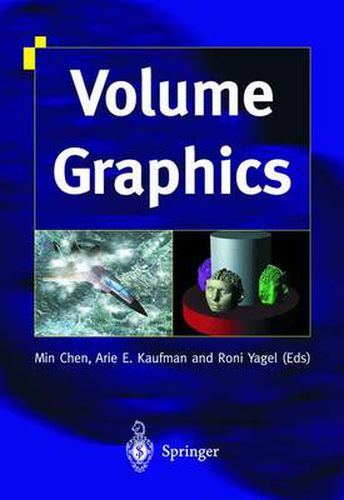Readings Newsletter
Become a Readings Member to make your shopping experience even easier.
Sign in or sign up for free!
You’re not far away from qualifying for FREE standard shipping within Australia
You’ve qualified for FREE standard shipping within Australia
The cart is loading…






This title is printed to order. This book may have been self-published. If so, we cannot guarantee the quality of the content. In the main most books will have gone through the editing process however some may not. We therefore suggest that you be aware of this before ordering this book. If in doubt check either the author or publisher’s details as we are unable to accept any returns unless they are faulty. Please contact us if you have any questions.
Min Chen, Arie E. Kaufman and Roni Yage/ Volume graphics is concerned with graphics scenes defined in volume data types, where a model is specified by a mass of points instead of a collection of surfaces. The underlying mathematical definition of such a model is a set of scalar fields, which define the geometrical and physical properties of every point in three dimensional space. As true 3D representations, volume data types possess more descriptive power than surface data types, and are morphologically closer to many high-level modelling schemes in traditional surface graphics such as parametric surfaces, implicit surfaces and volume sweeping. The past decade has witnessed significant advances in volume visualisation, driven mainly by applications such as medical imaging and scientific computation. The work in this field has produced a number of volume rendering methods that enable 3D information in a volumetric dataset to be selectively rendered into 2D images. With modern computer hardware, such a process can easily be performed on an ordinary workstation. More importantly, volume-based rendering offers a consistent solution to the primary deficiencies of the traditional surface-based rendering, which include its inability to encapsulate the internal description of a model, and the difficulties in rendering amorphous phenomena. The emergence of volume-based techniques has not only broadened the extent of graphics applications, but also brought computer graphics closer to other scientific and engineering disciplines, including image processing, computer vision, finite element analysis and rapid prototyping.
$9.00 standard shipping within Australia
FREE standard shipping within Australia for orders over $100.00
Express & International shipping calculated at checkout
This title is printed to order. This book may have been self-published. If so, we cannot guarantee the quality of the content. In the main most books will have gone through the editing process however some may not. We therefore suggest that you be aware of this before ordering this book. If in doubt check either the author or publisher’s details as we are unable to accept any returns unless they are faulty. Please contact us if you have any questions.
Min Chen, Arie E. Kaufman and Roni Yage/ Volume graphics is concerned with graphics scenes defined in volume data types, where a model is specified by a mass of points instead of a collection of surfaces. The underlying mathematical definition of such a model is a set of scalar fields, which define the geometrical and physical properties of every point in three dimensional space. As true 3D representations, volume data types possess more descriptive power than surface data types, and are morphologically closer to many high-level modelling schemes in traditional surface graphics such as parametric surfaces, implicit surfaces and volume sweeping. The past decade has witnessed significant advances in volume visualisation, driven mainly by applications such as medical imaging and scientific computation. The work in this field has produced a number of volume rendering methods that enable 3D information in a volumetric dataset to be selectively rendered into 2D images. With modern computer hardware, such a process can easily be performed on an ordinary workstation. More importantly, volume-based rendering offers a consistent solution to the primary deficiencies of the traditional surface-based rendering, which include its inability to encapsulate the internal description of a model, and the difficulties in rendering amorphous phenomena. The emergence of volume-based techniques has not only broadened the extent of graphics applications, but also brought computer graphics closer to other scientific and engineering disciplines, including image processing, computer vision, finite element analysis and rapid prototyping.